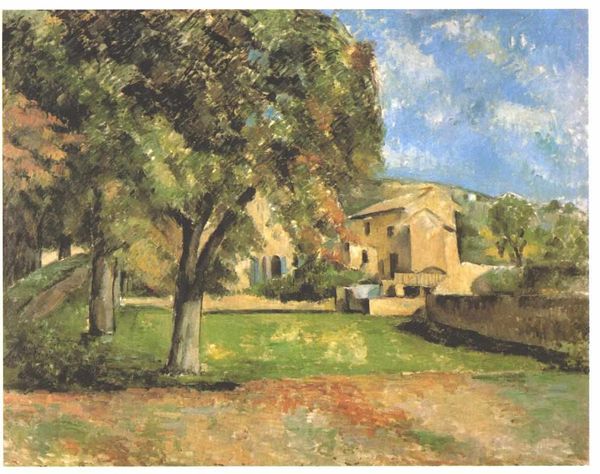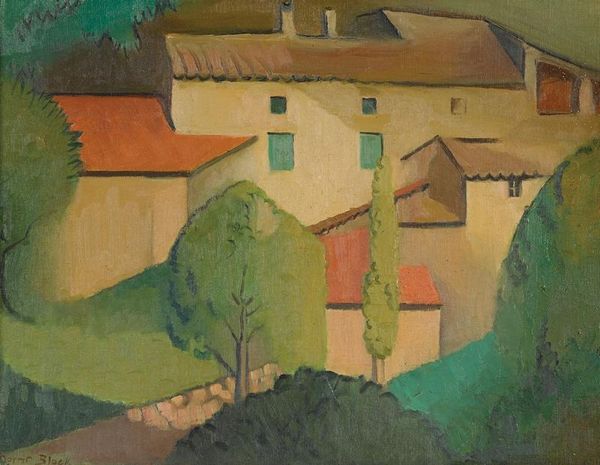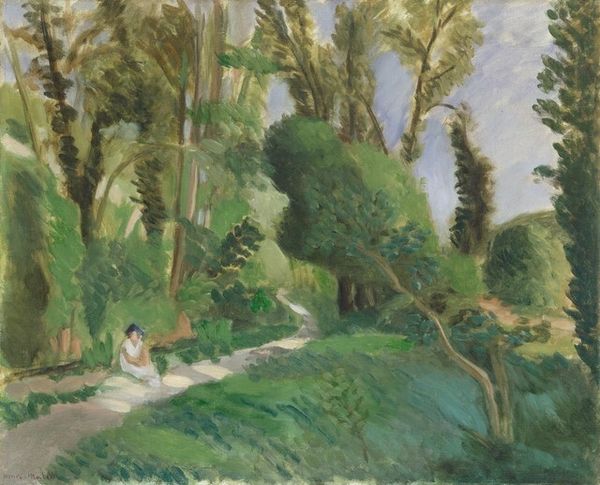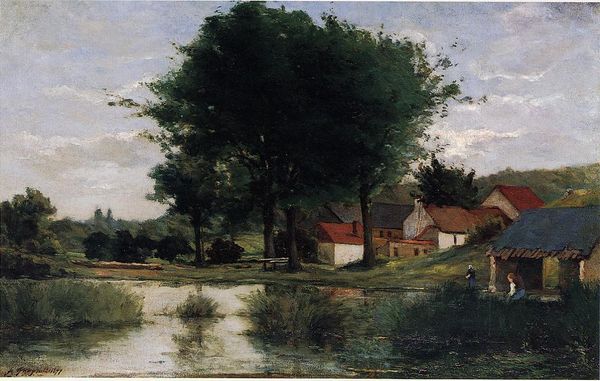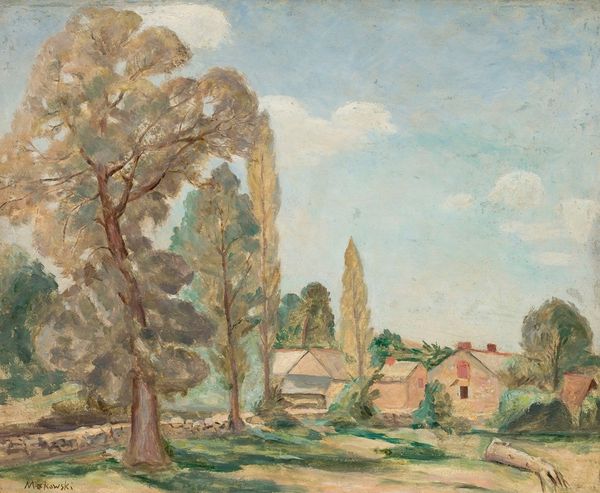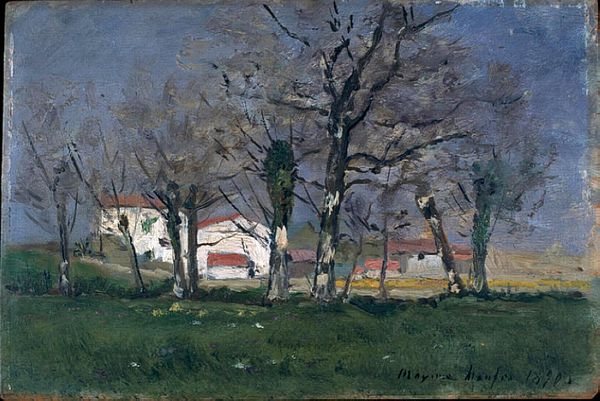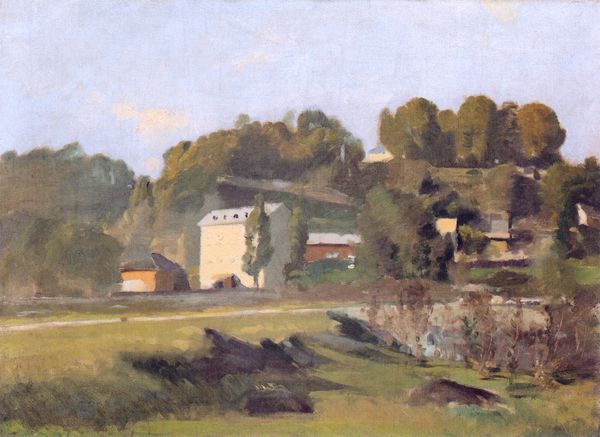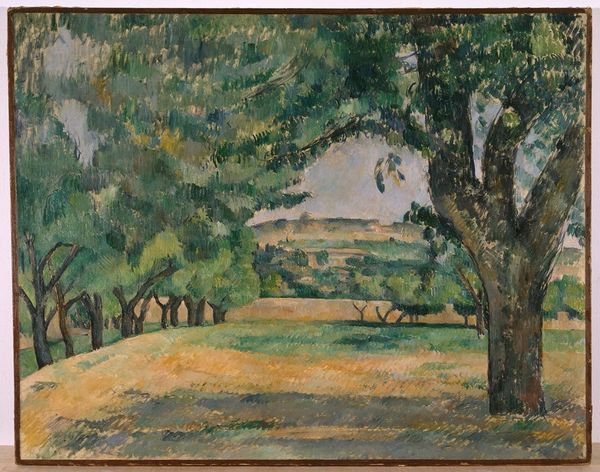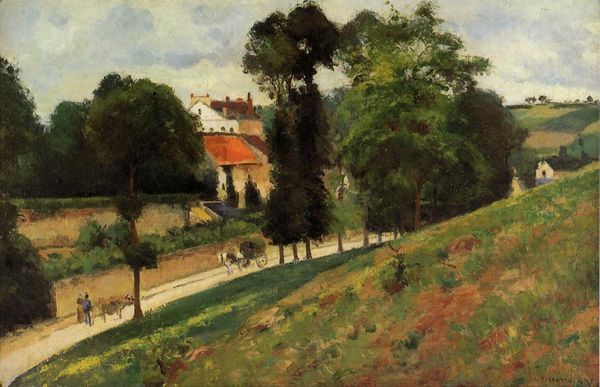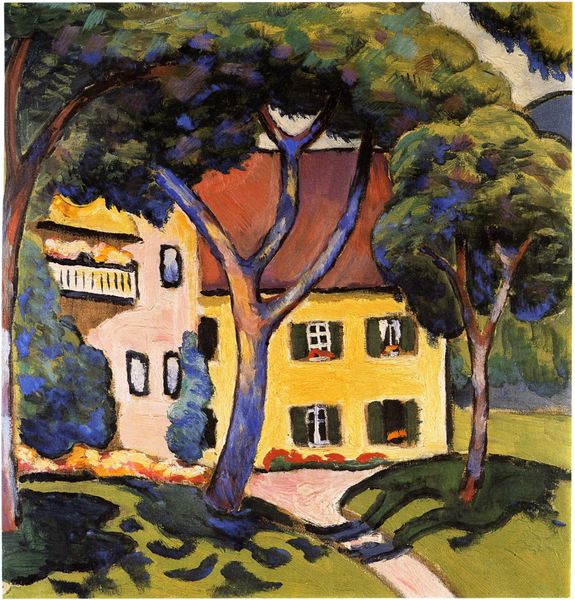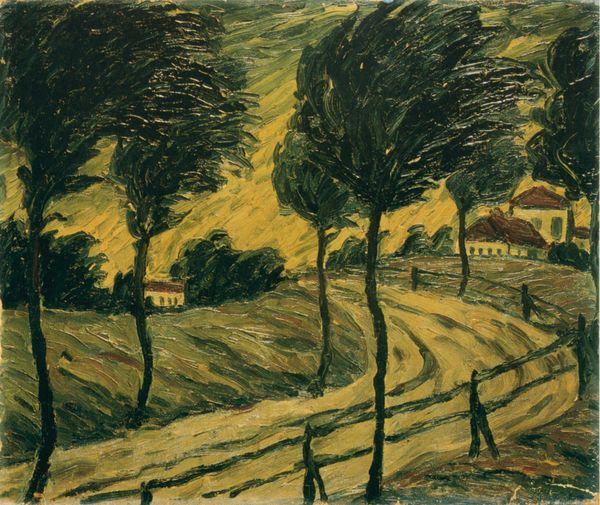
painting, plein-air, oil-paint
#
painting
#
impressionism
#
impressionist painting style
#
plein-air
#
oil-paint
#
landscape
#
impressionist landscape
Copyright: Public domain
Curator: Paul Cézanne’s "Road at Pontoise," created around 1875, is a captivating example of his early Impressionist explorations in oil paint and *en plein air*. Editor: There's a tranquility here, despite the somewhat muted palette. It’s got this hushed, almost secretive mood. The way the road seems to curve out of sight, almost like an invitation into a fairytale forest. Curator: It's interesting you mention that invitation, as it reflects the transitional space of Pontoise, a commune northwest of Paris. It was a meeting point of rural life and encroaching industrialization and modernization that shaped Cézanne's and the Impressionists’ view of shifting class structures, work, and leisure in France. Editor: That makes sense! There's a sort of stillness, broken by a sense of implied movement. The weight of those thick impasto strokes builds up an atmosphere that feels both solid and fleeting, which reminds me, it's as if the light might shift at any moment. He's playing with temporality beautifully, you know? Curator: Precisely, and those tactile surfaces he’s building invite questions about labor itself – about Cézanne’s physical act of applying paint, a tangible representation of artistic labor challenging the supposed effervescence of Impressionism itself. Editor: It all speaks to the solitude of artistic creation. But beyond that, isn't there a connection here between his labor and those of the invisible townspeople? Curator: Indeed. Cézanne’s method invites us to reconsider painting as not just an aesthetic pursuit, but a record of the cultural work tied up in making places and meaning. Editor: It brings so much into perspective! Next time I am on such a path, I am so pausing, looking around to see more in this transitional world. Curator: I think you’re right, paying attention to how paintings like this speak of constant change.
Comments
No comments
Be the first to comment and join the conversation on the ultimate creative platform.
